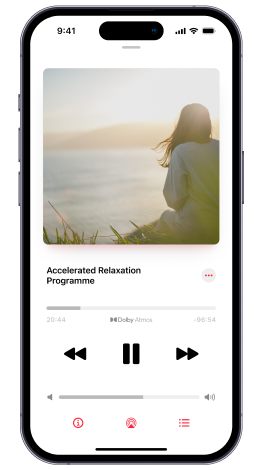Between two and five MILLION people in the UK have a Needle Phobia – here’s how to get through your Covid vaccination if you’re one of them.
If you’ve been watching news about the new coronavirus vaccine with a sense of elation tinged with dread, you’re probably one of the millions of people with a needle phobia. It’s real, it’s no fun if you suffer from it – and the good news is that it can be treated.
After a year which many people thought simply couldn’t get any worse, 2021 is off to a very mixed start. The ‘UK strain’ of the coronavirus has once again sent new infection levels spreading – though there is little doubt that, compared to many countries, the UK is doing an impressive job when it comes to rolling out the new Covid-19 vaccine.
But for the two to five million people in the UK who have a needle phobia – ‘trypanophobia’ to give it its medical name – this new development in the seemingly never-ending coronavirus saga comes with its own set of challenges.
Endless news footage of people having their sleeves rolled up and then given a shot in the arm isn’t helping. For many people, seeing people being injected is a vivid reminder that a scary – potentially panic-inducing – moment awaits them, too.
So what is a needle phobia? How is it defined, and how does it affect people? More importantly, how can it be treated? In this new post, we’ll get into each of these in turn.
Trypanophobia – a fear of needles
Needle phobia or trypanophobia is, unsurprisingly, a fear of needles – specifically the type used in medicine to either inject something or to draw blood.
One definition is “a fear of medical procedures that involve needles or injections”.
The phobia can affect anyone, though it is most commonly seen among people who have had bad experiences in the past with a needle at a hospital or their doctor’s
Some people, through illness, have a long history of injections and have developed powerful, negative memories of their experiences.
Even though it may have been many years since their last injection, it is very easy for these feelings to linger and intensify. Nauseating fear can set in at the thought of having an injection.
But what exactly is going on in the mind and body when this happens? What makes some of us far more bothered about the idea of a (usually not very painful) tiny injection than others?
Meet EMLI
There’s a useful acronym – EMLI – that can help understand what’s going on when people’s reaction to something manifests itself in fear and anxiety.
E = ‘event’
You’re not born with a fear of needles, there’s a good chance you were injected as a child and it hurt – and the memory has stuck. Perhaps you had multiple injections and grew to fear them – or maybe the very first time you had an injection your brother or sister had a jab just a few moments before you and it made them cry. This went on to form a lasting impression on you that injections are painful and that fear and crying are a normal response.
M = ‘meaning’
Instead of forgetting the event and moving on, you have given it meaning. You have made a negative lasting association with the experience, and it could be triggered today by anything from the rolling up of a sleeve to the clinical smell of a doctor’s office to the sight of the needle itself. The meaning you have attached to these images and thoughts is one of trauma, misery, pain, fear and unpleasantness – even though you can quite rationally tell yourself now that you are an adult that injections really don’t hurt that much.
L = ‘landscape’
In this case, the landscape actually means you: your body. It’s all about looking at what happens when your ‘trigger’ is activated. Whatever your trigger (maybe you’ve thought about needles or you’ve seen someone being injected on TV), your body switches into a new ‘survival’ mode. Your body is telling you that there’s something to be scared of and your ‘fight or flight’ response kicks in as adrenaline floods your body. Meanwhile, the amygdala, a small part of the brain, switches into a kind of ‘scanning’ position, looking for further evidence that you’re in danger. The net result? Anything from mounting panic and headaches to sweating and palpitations – or any combination of these.
I = “inescapability”
The final part of this scenario is the crushing sense of dread that envelopes your body as you tell yourself there’s nothing you can do. You feel trapped – either in the situation, or in your body’s response to it. We’ll talk a little later about how addressing ‘E’ can help to reduce or eliminate the M, L and I parts of the equation.
Conquering the fear ladder
Needle phobia is sufficiently important for Guy’s and St Thomas’ NHS Trust in London to have written a leaflet about it. This is available to patients who are concerned about having an injection.
The Trust clearly understands just how severe the phobia is among certain people, and have even suggested creating a ‘fear ladder’, that people can act out in advance to mentally prepare themselves.
They’re certainly not playing down the fear level in the distress ratings on this sample chart:
- Thinking about having an injection: 5/10 (distress rating)
- Listening to someone talking about it: 6/10
- Looking at photos of injections: 6/10
- Watching someone having an injection on TV or online: 7/10
- Watching someone having an injection in real life: 8/10
- Touching a needle: 8/10
- Holding a needle: 8/10
- Having an injection in their own arm: 10/10
The Trust – which says that at least one in 10 people have a needle phobia – suggests mentally tackling each of the above, one step at a time, staying with your fear “long enough to feel your anxiety peak and then gradually reduce.”
This is a technique often used by hypnotherapists, whose expertise and experience can be helpful in assisting clients with visualising difficult things and then reframing how they see them.
Fear of needles is a global issue
The UK is obviously not alone when it comes to a fear of needles. CNN wrote about one woman’s experience of needle phobia in January 2021; she is a fourth-year medical student in Philadelphia who talks of getting clammy and then getting cold sweats whenever she knows she has to have an injection.
That’s not the worst of it: the next step, she says, is to actually pass out. She says she can trace the fear back to when she was a teenager and had a flu jab at the doctor’s.
Across the world, tens of millions of people are similarly afflicted. Multiple celebrities are said to be among the sufferers, including Jackie Chan, Selena Gomez, Joan Collins and boxer Tyson Fury, who recently told chat show host Jonathan Ross: “Stick a needle in me and I faint.”
Collins, however, was among the first wave of British people to get the vaccination: the 87-year-old received the Oxford-AstraZeneca vaccine in early January and had sufficiently overcome any fear she may have had to tell reporters: “it was the easiest thing.”
The NHS predicts that 80 per cent of the UK population will have the vaccine – an incredible 104 million doses in total. Just like Joan, many of the people receiving these jabs will need to overcome (or at least face up to) their fear of needles first.
Overcoming a fear of needles
The good news for the millions of people around the world who suffer from a fear of needles is that it is a very treatable condition. And people certainly want to find a solution.
When Fix My Mind did our own, independent research in early January, we found that just over half of the 500 people we surveyed said they had a fear of needles.
Of these, 79 per cent said they would be interested in trying to treat it.
Among the various methods that have been used over the years to treat a fear of needles and other phobias are CBT (also known as “talking therapy”) and medication.
Research data shows that people typically need 6-10 sessions of CBT to treat their phobia, whilst medication tends to be ongoing.
A third way that people can be treated is a hypnotherapy technique known as Havening, which is growing in popularity because it has proven transformational when dealing with phobias.
Havening is usually done either in person or over Zoom/Skype on a one-on-one basis with a clinical hypnotherapist. It works by changing pathways in the brain that are linked to emotional stress. In other words, it helps to neutralise someone’s response to something – such as needles.
If you remember the EMLI acronym, it neutralises the ‘E’… so the M, L and I no longer happen.
I have helped multiple people for a variety of phobias – including needle phobia – using Havening, and it is highly effective. I believe it is the single most effective treatment option available, and in most cases, people can be treated in just one session.
A very treatable condition
As the rollout of the vaccine picks up speed, it will no doubt be very comforting to millions of people to learn that a fear of needles is a very treatable condition.
People with this phobia can choose the treatment that suits their outlook, time-frame and budget – there are options available for everyone.
My own area of expertise is treating a fear of needles with hypnotherapy. Whether you’re looking for hypnotherapy in London or a virtual session online, you’ll find that the process is all very straightforward.
Please call me or get in contact for a free initial consultation and we can talk about how hypnotherapy can help with your needle phobia, too.


